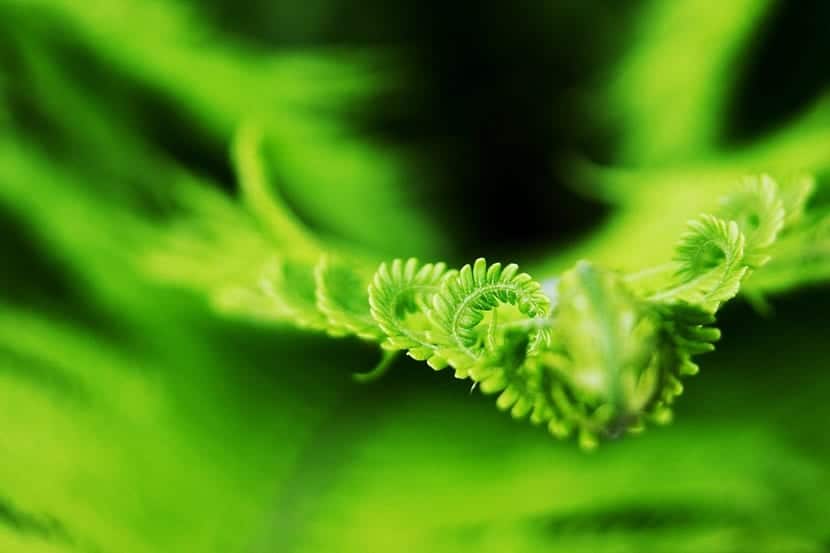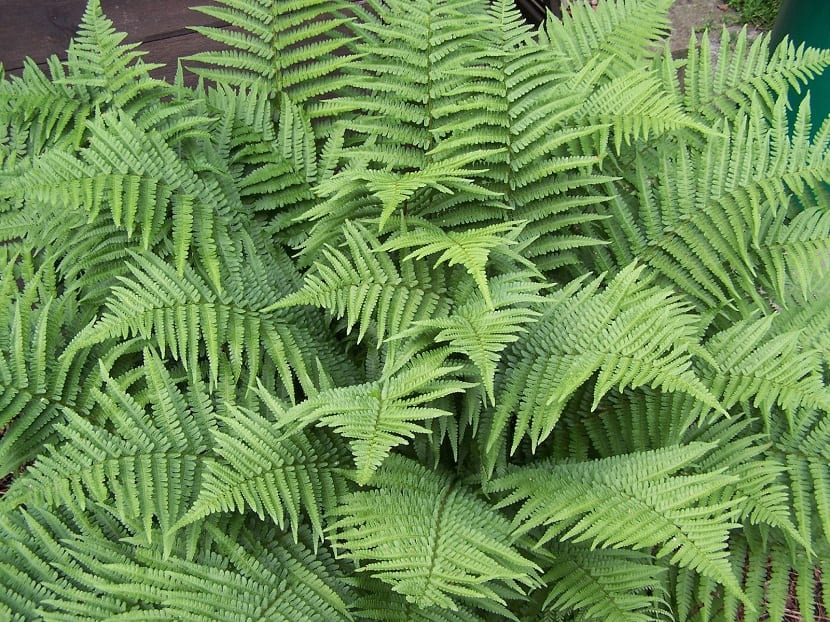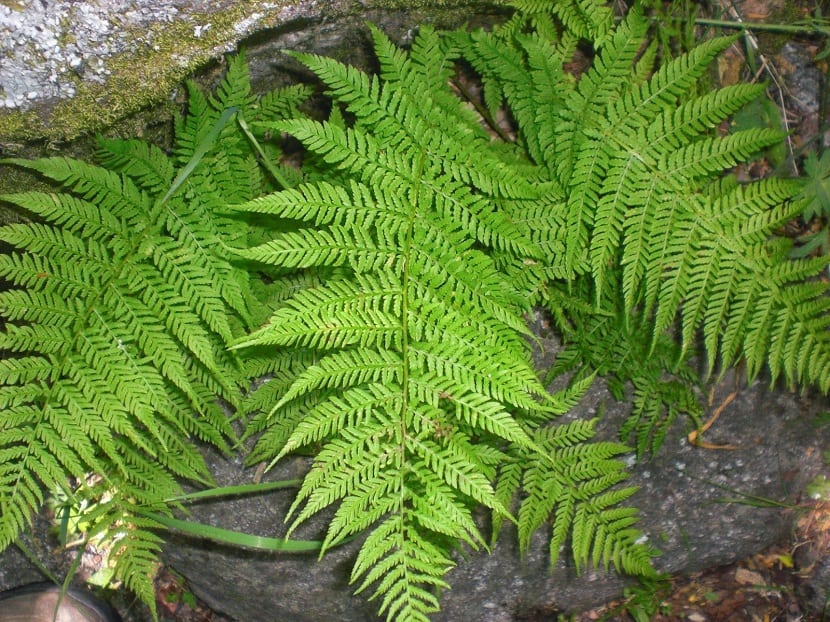
The male Fern and whose scientific name is Dryopteris affinis, It is located in shady forests where there is a lot of humidity, although can be seen in streams, slopes and cliffs. Where to find it? It is a fern that is characterized by having a great presence in Europe.
Features

This is a very strong and robust species. It has a somewhat plump and very thick rhizome that can be confused with the root. It has a very particular leaf that is petioled and scaly, a very normal characteristic in ferns.
In the months of August and September the fern releases brown spores that give way to the reproduction of the plant. This plant is perennial and is secured to the ground by means of the rhizome and in terms of the size of the leaves there are varieties that can measure up to one meter in length.
It's important pointing that it is called male because of the robust appearance of its leaves that differentiate it from the female fern, which is more delicate. Both ferns share the same way of reproduction.
As for gardening, it is used indoors, but requires ventilation to stay in optimal conditions.
From a medicinal point of view, the male fern provides filicin and in ancient times it was used as an anthelmintic and it was used to fight worms. It is also somewhat toxic, leading to cases of blindness and heart or kidney problems that can be fatal for people.
Farming
Among its most outstanding characteristics is that lacks flowers. The thick rhizome that it has is important to pluck it when it is fresh, since it is when it is most active.
In relation to the harvest time, in autumn the best rhizomes are found. It must be said that they do quite well in siliceous soils and in calcareous lowlands.
Uses of male fern
It acts as a dewormer, especially against flukes and cestodes. If it is to be used for medicinal purposes it is important collect the rhizomes in the fall seasonYes, these must be cleaned and go through a drying process with a temperature that exceeds 35 degrees Celsius.
In traditional medicine, ferns along with mint and sage as well as elderberry, roses and chamomile, were used in combination with straw for design and manufacture of mattresses and thus be able to address rickets problems.
Derivatives of floroglucinol such as filicin and an essential oil containing free fatty acids are found in the rhizome. Its most common use is as mentioned above, as an anthelmintic, because helps fight infections.
It also provides floroglucids, the benefit of which helps fight intestinal worms by allowing them to be released and subsequent expulsion. They have also been used to combat tapeworms, which, helped with a purgative, eradicate it.
The only thing to consider regarding the purgative is that cannot contain fatty elements because it can have unwanted effects. Likewise, do not supply this plant with alcohol, as it could lead to gastroenteritis, bronchospasm and even blindness.
In that case, the preparations that are standardized should be reviewed, which detail the method of administration of the substance, of course, under strict medical supervision, in fact, due to its potential danger, homemade preparations should be avoided.
Care

They can live in groups or in isolation and it is always good that they grow under a tree.
They are easy to adapt in spaces with shade or that are given moderate light, they do not withstand temperatures below 15 ºC. Regarding the soil, it must be well drained, as well, as it must contain abundant organic matter.
Do not let the plant dry out, it does a lot of damage and also must be paid approximately every 20 days adding special fertilizers for indoor plants.
It really is a very decorative plant that can be used in any space. What's more purify the air, so it is a plant widely used to decorate interiors. It grows very fast and has a very elegant bearing, with bright green leaves.
Although it is widely used indoors, it is It is also used to beautify outdoor areas such as gardens and terraces.